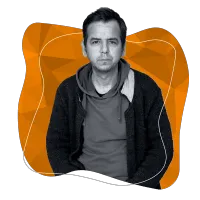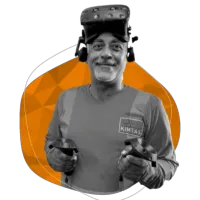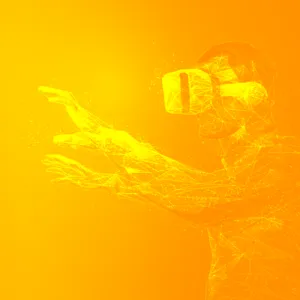BU DÖNÜŞÜME BİZİMLE TANIK OLMAYA HAZIR MISINIZ?

ENDÜSTRİYEL EĞİTİMLERDE VR/XR İLE DİJİTAL DÖNÜŞÜM BAŞLADI!
ETKİNLİĞİMİZ TAMAMLANMIŞTIR. TEŞEKKÜRLER!
ETKİNLİĞİMİZLE İLGİLİ BİLGİLER
◼️ VR ve XR ile İSG’de dijital dönüşümü deneyimleyin
◼️ Farklı sektörlerde VR ve XR teknolojilerinin faydalarını keşfedin
◼️ Sektörünüze özel İSG eğitimlerinde yenilikçi eğitim çözümlerini tanıyın
◼️ 4 özel istasyonumuzda eşsiz deneyimler:
⤷ 1. İstasyon: RoT STUDIO platformu ile kendi prosedürel eğitim senaryolarınızı VR’a taşıyın!
⤷ 2. İstasyon: Hazır senaryolarla VR ile İSG Eğitimleri Katalog ürünlerimizi inceleyin!
⤷ 3. İstasyon: Müşterilerimiz için tasarlanmış özel projelerimizi deneyimleyin!
⤷ 4. İstasyon: Deprem Tecrübe Odası’nda depreme hazırlık eğitimi alın!
◼️ Her bölümde RoT STUDIO ekibinden uzmanlarla birebir görüşme ve demo fırsatları
KONUŞMACILARIMIZLA
TANIŞIN

İş Geliştirme ve Satış Müdürü
RoT STUDIO

Kurucu
infoTRON, +90 3D Digital Factory & RoT STUDIO

Pazarlama Direktörü
infoTRON, +90 3D Digital Factory & RoT STUDIO

Türkiye İSG Müdürü
Kimtaş

Kıdemli Proses Uzmanı
Ford Motor Company
AJANDA
| 10:00 - 10:30 | Kayıt & İkram | |
| 10:30 - 10:40 | Açılış Konuşması | Rüveyda Tunalı RoT STUDIO - RoT STUDIO - Pazarlama Direktörü |
| 10:40 - 10:55 | RoT STUDIO | Burak S. Pekcan RoT STUDIO - Kurucu |
| 10:55 - 11:40 | VR/XR İle Endüstride Eğitim Çözümleri | Kamil Bozkurt RoT STUDIO - İş Geliştirme & Satış Müdürü |
| 11:40 - 11:50 | Kullanıcı Hikayeleri | Muharrem Altıoğlu Ford - Kıdemli Proses Uzmanı |
| 11:50 - 12:00 | Kullanıcı Hikayeleri | Mehmet Çiçek Kimtaş - Türkiye İSG Müdürü |
| 12:00 - 14:30 | İkram & VR/XR Deneyim Turu | |
| 14:30 - 16:00 | 1:1 Görüşmeler |

Adres
ODTÜ-Teknokent Silikon Bloklar
17/1 No: B05 06531 Ankara, Türkiye
Telefon
+90 312 4000 768
E-mail
[email protected]

